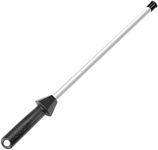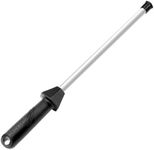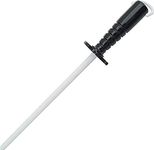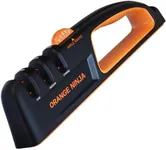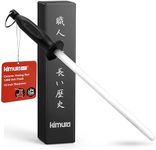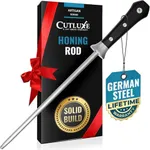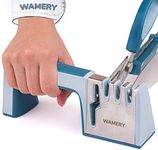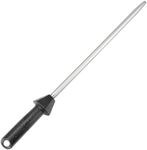Buying Guide for the Best Ceramic Sharpening Rod
Choosing the right ceramic sharpening rod can significantly enhance your knife maintenance routine. A ceramic sharpening rod is a tool used to hone and maintain the edge of your knives, ensuring they stay sharp and effective for longer periods. When selecting a ceramic sharpening rod, it's important to consider several key specifications to ensure you get the best fit for your needs. Here are the key specs to look out for and how to navigate them.LengthThe length of the ceramic sharpening rod is crucial because it determines how much of the knife blade can be sharpened in one stroke. Sharpening rods typically range from 8 to 12 inches. If you have longer knives, such as chef's knives, a longer rod (10-12 inches) is more suitable as it allows for a more efficient sharpening process. For smaller knives, a shorter rod (8-10 inches) will suffice. Consider the size of your knives and choose a rod length that matches or exceeds the length of your longest knife.
Grit LevelThe grit level of a ceramic sharpening rod refers to the coarseness or fineness of the rod's surface. This is important because it affects how much material is removed from the knife blade during sharpening. Fine grit rods (typically around 1200 grit) are ideal for regular maintenance and honing, as they smooth out minor imperfections and keep the edge sharp. Coarser grit rods (around 600-800 grit) are better for repairing dull or damaged edges. If you regularly maintain your knives, a fine grit rod is usually sufficient. If your knives often get very dull, consider a rod with a coarser grit.
Material QualityThe quality of the ceramic material used in the sharpening rod is important for durability and effectiveness. High-quality ceramic rods are harder and more wear-resistant, ensuring they last longer and provide consistent results. Look for rods made from high-grade ceramic materials, as these will be more effective at maintaining your knife edges and will not wear down quickly. If you use your sharpening rod frequently, investing in a high-quality ceramic rod will provide better long-term value.
Handle DesignThe handle design of the ceramic sharpening rod affects comfort and safety during use. A good handle should provide a secure and comfortable grip, preventing slippage and ensuring precise control while sharpening. Ergonomic handles with non-slip materials are ideal, especially if you plan to use the rod frequently. Consider how the handle feels in your hand and whether it provides a comfortable and secure grip. A well-designed handle can make the sharpening process easier and safer.
WeightThe weight of the ceramic sharpening rod can influence how easy it is to use. Heavier rods can provide more stability and control, making it easier to maintain a consistent angle while sharpening. However, they can also be more tiring to use over extended periods. Lighter rods are easier to handle and maneuver but may require more effort to maintain control. Consider your own strength and comfort level when choosing the weight of the rod. If you prefer a more stable and controlled sharpening experience, a heavier rod may be better. If you prioritize ease of use and maneuverability, a lighter rod might be more suitable.




